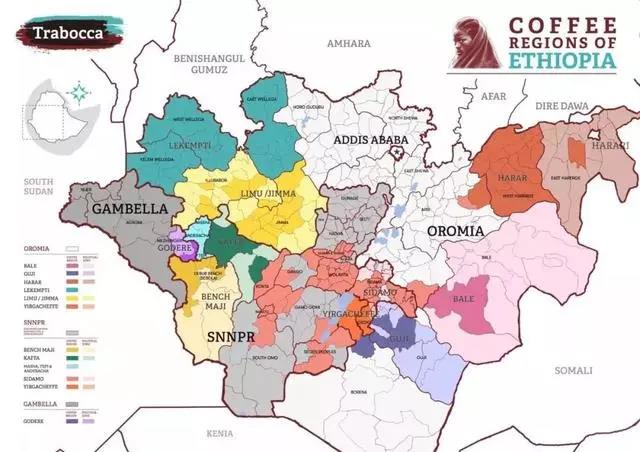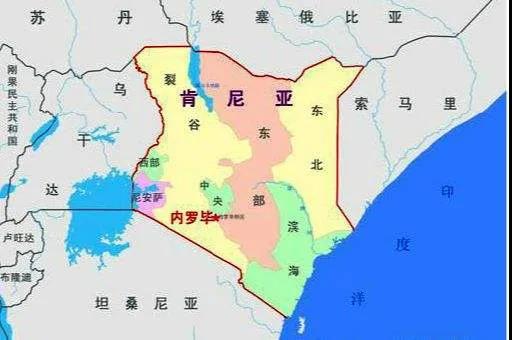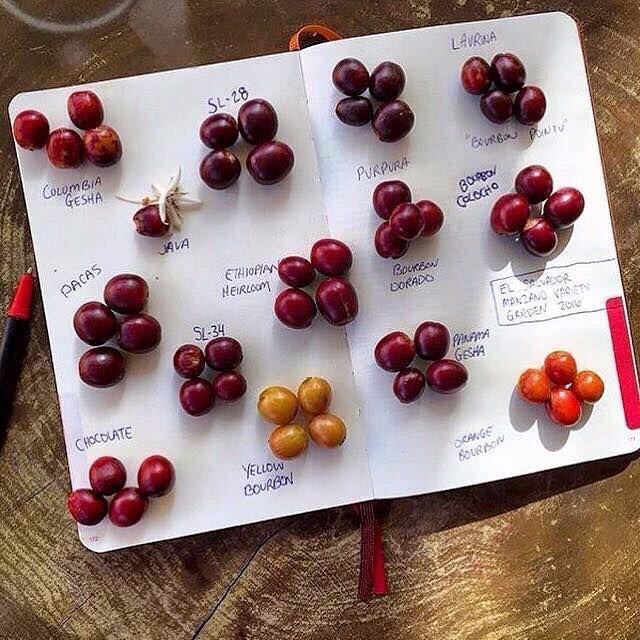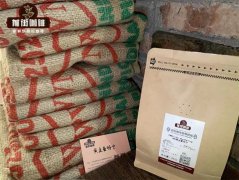The origin of fine coffee beans in Africa, what kinds of coffee beans are in Africa, and the origin of coffee.
Speaking of coffee beans from Africa, you can immediately think of Kenyan coffee beans and Ethiopian coffee beans. Their beans have always been very popular among the people, because the rich sour fruits are really unforgettable. Africa, located in the equatorial zone, is a well-known region of coffee producers in the world, such as Ethiopia and Kenya.
Ethiopia is the birthplace of coffee, and its coffee seeds have been planted all over the world, giving rise to a variety of varieties. Almost all coffee in Ethiopia is grown on small farms and is uniformly exported by the government. There are nine coffee producing areas in Ethiopia: Yega Sheffield, Sidamo, Lim, Hara, Jinma, Iruba, Kinby, Tibbebeca, Lake Tana, Wenago, and Gelena/Abaya. One of the most famous can be said to be the Yega Sheffei producing area.
Ethiopian coffee varieties

As mentioned above in Qianjie Coffee, there are so many varieties of coffee in Ethiopia that there are as many as 5, 000 varieties of Ethiopian native coffee beans found in the forest of the southern Kaffa region alone. Among them, there are nearly 2000 coffee bean varieties recorded (of which 1927 are native varieties and 128imported varieties). As a result, coffee fans who often buy coffee beans in Ethiopia have found that coffee beans in Ethiopia vary in shape and size, because the variety of Ethiopian coffee is very large, most of which have not yet been officially genetically identified. It is precisely because of the astonishing number of varieties, on the one hand, it is difficult to identify and classify them, and on the other hand, the Ethiopian government is unwilling to disclose the information of these varieties for the sake of protection, so it is collectively called "Ethiopian native species Heirloom".
So Ethiopia is a coffee breed bank with a lot of potential. Among them, such as iron pickup, rose summer coffee varieties all originated in Ethiopia, there are thousands of beans, which is the first reason for the different sizes of Ethiopian coffee beans.
Kenya is located in eastern Africa, the equator runs through the central part of the country, and the Great Rift Valley stretches north and south. It is bordered by Somalia to the east, Tanzania to the south, Uganda to the west, Ethiopia and Sudan to the north, and the Indian Ocean to the southeast.

Kenyan coffee, known as the "Cup of connoisseurs" (Connoisseurs' Cup), often has a strong aroma, bright and lively acidity, full and elegant mellowness, a lingering multi-layered taste and the acidity of fruit juice.
Kenyan coffee is mostly grown at an altitude of 1500m, and is harvested twice a year. Coffee from different producing areas also has different flavors due to microclimate differences. Kenya coffee producing areas are the most famous in seven major producing areas, Thika, Kirinyaga and the west side of Mount Kenya (Mt. Kenya West, Nyeri, Kiambu, Ruiri and Muranga.

The varieties originally introduced to Kenya were Bourbon and India's Kent, and later Blue Mountain Tibica varieties were introduced from Jamaica and planted in Mount Elgonne. But the famous BlackBerry flavor of Kenyan coffee is brought not by Blue Mountain, Kent or traditional bourbon varieties, but by bourbon variants SL28 and SL34, which first appeared in Kenya in the 1930s. The coffee producing areas in Kenya are mainly concentrated in Mount Kenya (Mt. The plateau region represented by Kenya). Tropical climate, acid red volcanic soil provides a natural and suitable growth environment for coffee, the main producing areas such as Nyeri, Ruiru and so on.
The cultivated varieties in Kenya are mainly composed of three varieties: SL-28, SL-34 and Ruiru11.
Important Notice :
前街咖啡 FrontStreet Coffee has moved to new addredd:
FrontStreet Coffee Address: 315,Donghua East Road,GuangZhou
Tel:020 38364473
- Prev

Cup test coffee is what kind of process, cup test coffee meter, cup test how to score?
Cup test coffee is what kind of process, cup test coffee meter, cup test how to score? The items tested in the COE cup are: aroma, cleanliness, sweetness, acidity, oral touch, flavor, aftertaste, balance, overall. COE is the abbreviation of Cup Of Excellence, which translates to the Cup of Excellence. The Excellence Cup Program was born in 1999. The main goal of the project is: through the quality coffee competition.
- Next

Why is it called Golden Manning? where can I buy authentic gold manning?
Mentling coffee, Ankora coffee and Lintong coffee grown in Sumatra are the best quality gourmet coffee in the world. These coffees are characterized by rich, more down-to-earth flavors than Java Arabica, unique herbal tones and low acidity. This low acidity makes them particularly attractive to people who are sensitive to healthy organic acids in coffee. Sumatra caffeine is abundant.
Related
- Detailed explanation of Jadeite planting Land in Panamanian Jadeite Manor introduction to the grading system of Jadeite competitive bidding, Red bid, Green bid and Rose Summer
- Story of Coffee planting in Brenka region of Costa Rica Stonehenge Manor anaerobic heavy honey treatment of flavor mouth
- What's on the barrel of Blue Mountain Coffee beans?
- Can American coffee also pull flowers? How to use hot American style to pull out a good-looking pattern?
- Can you make a cold extract with coffee beans? What is the right proportion for cold-extracted coffee formula?
- Indonesian PWN Gold Mandrine Coffee Origin Features Flavor How to Chong? Mandolin coffee is American.
- A brief introduction to the flavor characteristics of Brazilian yellow bourbon coffee beans
- What is the effect of different water quality on the flavor of cold-extracted coffee? What kind of water is best for brewing coffee?
- Why do you think of Rose Summer whenever you mention Panamanian coffee?
- Introduction to the characteristics of authentic blue mountain coffee bean producing areas? What is the CIB Coffee Authority in Jamaica?

